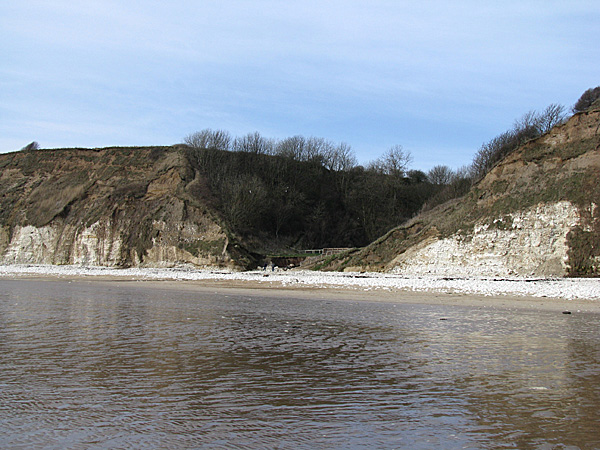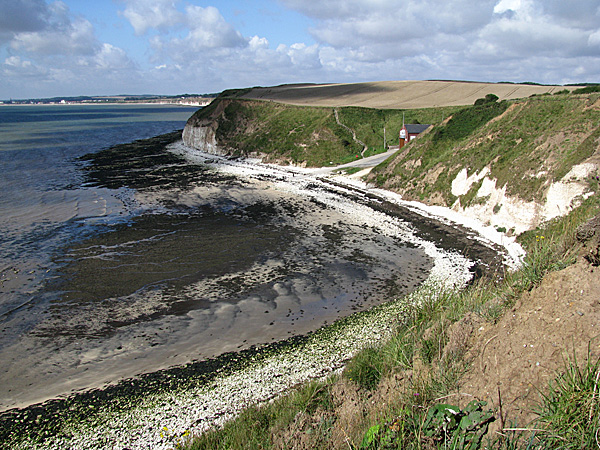Buried Valleys, Pleistocene Sediments And Dating The Last Ice Sheet Advance In Eastern Britain: New Evidence From Flamborough Head
Rodger Connell (Department of Geography, Environment and Earth Sciences, University of Hull) and Members of the Flamborough Quaternary Research Group, Hull Geological Society.
The palaeo-valleys of Flamborough head and their infill, particularly those at Danes’ Dyke and South Landing, were first recognised by Daykns during the geological survey of the district in the 1880s. However, George Lamplugh (then a local amateur geologist), was the first to provide detailed descriptions and illustrations of the sediments in a series of papers in the early 1890s. Since these pioneering studies little has been published on the sites and their significance for the chronology of the last glaciation of eastern Britian has been overlooked, with Holderness, to the south, providing the type-site for the period of the last ice sheet advance/s – the Dimlington Stadial (ca. 15,000 – 26,000 yrs).
Since 2002 members of Hull Geological Society’s Flamborough Quaternary Rsearch Group (FQRG) have been recording the periglacial and glacial deposits at the two sites and it has become clear that they possess contrasting and important sequences preserved within the palaeo-valleys. These chalk-cut palaeo-valleys are part of the family of chalk dry valleys seen to good advantage in the Yorkshire Wolds, though here buried by glacial sediments within the limits of the ice-sheet adavance. Clearly these palaeo-valley forms pre-date the last glaciation and possibly, as at South Landing, were in existance before the last interglacial (ca. 120,000 yrs).
At the base of the palaeo-valley fill at Danes’ Dyke (Fig. 1) is tectonically and periglacially defomed chalk bedrock. This is overlain by a periglaical slope deposit with a windblown (loessic) silt matrix. Above this unit are coarsening upward glacilacustrine silts/sands which have provided material for optically stimulated luminescence (OSL) dating at Sheffield University. These early units are overlain by a number of glacial till and outwash beds of which the tills can be correlated with the Skipsea Till of Holderness.
The broader valley form at South Landing (Fig. 2) contains a more complex set of deposits. On the east side of the palaeo-valley are thick (~10m) coarse, erratic-poor, chalk gravels believed to have been deposited as a westerly prograding glacigenic fan. In the western exposures thinner (~3m), erratic-rich, gravels rest on a subhorizontal chalk platform, and are younger than those to the east. These are interpreted as glacifluvial outwash derived from an ice front to the north of the site. This western gravel has a periglacial land surface developed close to its upper surface indicating an hiatus in deposition of unknown duration. In the western outcrop the gravels are overlain by glacilacustrine silts/clays and outwash gravel and finally by a representative of the Skipsea Till. A number of samples from these deposits have been selected for OSL dating at Sheffield University.
The as yet unpublished OSL dating from both these sites has allowed the construction of a chronology for the sediments preserved within the palaeo-valleys, together with a clearer understanding of the time relationship between the Flamborough sites and the Dimlington type-site in Holderness. Whilst the ice-sheet had not advanced as far south as Dimlington at ~20,000 yrs it seems that the ice-sheet was present in what is now northern Bridlington Bay and was blocking the south draining valleys at Danes’ Dyke and South Landing and causing the ponding of glacial lakes. Of more significance perhaps is a date of ~35,000 yrs from the gravel unit on the west side of South Landing. If correct, this implies that the last ice-sheet was present to the north of the site at an early date, a possibility that some have suggested previously though with no chronometric control. Additional OSL dates are awaited to confirm this chronology but it appears that the Flamborough sites provide significant new evidence for the timing of glaciation in eastern Britian.




